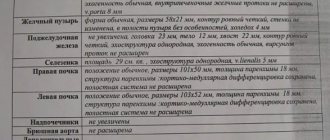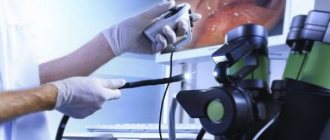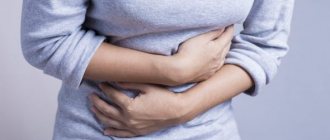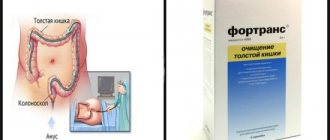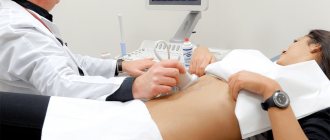Let's understand the terms: different names - the essence is the same
One of the least favorite procedures among patients is examining the gastrointestinal tract using a fiber-optic probe with a camera at the end. People say about it “swallowing a light bulb for the stomach.” What is this procedure called in doctors' language?
The term “gastroscopy” is most often used. The full name is “fibrogastroduodenoscopy” (FGDS). It comes from the following words: “fibro” - since fiber optics are involved, “gastro” - stomach, “duodeno” - intestine, “skopiya” - look. If you put it all together, you get “using fiber optics to look at the stomach and intestines.”
Sometimes you can hear the term “esophagogastroduodenoscopy” (EGDS) from doctors. If you dare to read this word to the end, the question will arise: egds and fgds - are there any differences? If they do an FGDS, they look at the stomach and duodenum. During the EGD process, the esophagus is also examined. Sometimes another abbreviation is used - FGS, and it stands for “fibrogastroscopy”. In this case, the examined area is limited only to the stomach.
Is there a difference for the patient? Not really. It doesn’t matter what will be written in the direction - FGS, FGDS or EGDS. If during the examination the endoscopist considers it necessary to examine not only the stomach, but also the esophagus and duodenum, he will do this without the knowledge of the patient. It cannot be said that any of these procedures is easier to bear, while the other is more painful. There is no difference, everything will happen according to the same scenario, the main point of which is swallowing the hose.
What does FGDS of the stomach show?
Gastroscopy of the stomach can be prescribed to patients of any age and gender; there are no contraindications or restrictions for these parameters. The examination is carried out in a clinic or hospital, but does not require special placement in a hospital. The prescribed medical examination, namely FGDS of the stomach, shows:
- stomach diseases: gastritis, peptic ulcer, hypersecretion, achylia, esophagitis, cancer or mechanical damage;
- diseases of the inner lining of the duodenum.
A procedure is carried out to identify changes in the listed organs, including possible ulcerations or neoplasms. Your attending physician must also inform you about how to prepare for an FGDS of the stomach.
A look from the inside: why is FGDS needed and who is it prescribed for?
Today, doctors have painless diagnostic technologies at their disposal. But if it is necessary to get a complete picture of the state and functioning of the digestive organs, then you still have to “swallow the guts.” Gastroscopy is a procedure in which an ocular or video endoscope is inserted into the stomach cavity through the mouth and esophagus. It's simply a thick hose (about 1cm in diameter) with wires running through it and a mini camera attached to the end. Through it, the doctor will see everything that is inside you.
Usually the referral is issued by a general practitioner or gastroenterologist. FGDS has not only diagnostic value: during such an examination they can carry out treatment (remove a polyp) and take material for analysis (biopsy).
A patient may be sent for an FGDS if he has:
- the stomach hurts, and it is not possible to find out what the reason is;
- there is discomfort in the esophagus;
- he swallowed a foreign object;
- suffers from heartburn for a long time;
- attacks of nausea;
- vomiting constantly;
- belching;
- problems with bowel movements;
- difficulty swallowing;
- sudden weight loss with a normal diet;
- aversion to food;
- anemia of unknown etiology;
- cases of ulcers or stomach cancer have been recorded in the family;
- he is being prepared for abdominal surgery;
- he had a polyp removed;
- an ulcer, gastritis has been treated, and it is necessary to see the results of therapy;
- there is a suspicion of cancer.
How to swallow a tube correctly
The main feature of the procedure is swallowing the probe. Some people are afraid of this very fact. But if you study the FGS video of how the examination is done, you can be convinced of the safety of gastroscopy, the absence of pain and other inconveniences. Modern technologies for creating medical technologies are so advanced that previously unpleasant research has become a routine procedure. It is performed on both infants and elderly people, safely, painlessly and without much discomfort. Therefore, there are no rules on how to swallow a tube correctly.
If you have not yet decided on a medical institution or attending physician, then be sure to use the services of our website! For your convenience, a list of clinics performing FGS and FGDS is located below the article. Also, to the left of the article, you can see a list of specialists with ratings and reviews. Don’t rely on chance, get treatment from professionals!
Who should not undergo FGDS?
It is prohibited to conduct this study if the patient is in serious condition, has just suffered a hypertensive crisis, stroke, heart attack, suffers from a blood clotting disorder, or if his bronchial asthma has worsened.
The examination is not carried out on patients with mental disorders. For pregnant women, it is performed in exceptional cases, since there is a danger that the uterus will become more toned.
Where to do a gastroscopy
Gastroscopy can be performed in a hospital and in special diagnostic centers. A list of similar establishments in various cities is shown in the table.
| City | Street | Clinic name | Price |
| Moscow | Spartakovsky Lane, 2 | Best Clinic | RUB 79,900 |
| Saint Petersburg | Morskoy proezd, 3 | Consultative and diagnostic center with clinic | 30,000 rub. |
| Krasnodar | St. Novitsky, 2/4 | LLC "Marimed" | 50000-70000 rub. |
| Kyiv | st. Families Idzikovsky, 3 | Treatment and diagnostic | 12800 UAH |
| Dnepropetrovsk | Capsule diagnostics cannot be performed, only conventional | ||
Prices by country will vary depending on the type of study and its completeness (in the case of classical sounding). Average prices can be seen in the table.
| City | Price |
| Moscow | 40,000-110,000 rub. |
| Saint Petersburg | 25000-40000 rub. |
| Kyiv | 11000-22000 UAH |
| Odessa | 11000-13000 UAH |
How to prepare for the examination?
The patient must take a referral, an outpatient card, a towel (diaper), sterile gloves, and shoe covers. Those taking heart and asthma medications should take them with them.
How to behave on the eve of EGD? Preparation for the study is as follows: 2 days before the procedure, you need to remove nuts, seeds, alcohol, chocolate, and spicy foods from the menu. 12 hours before rush hour, stop eating completely. Dinner on the eve of endoscopy should not include meat, raw vegetables, salads, baked goods, sweets, or jam. If it is scheduled for the second half of the day, then breakfast is cancelled. You are allowed to drink still water or weak sweet tea.
Preparation for gastroscopy
As with most medical procedures, preparation for gastroscopy of the stomach is also required. You must start preparing no later than one day before this procedure. On this day, it is recommended to eat exclusively light food, which excludes meat, cereals, fish and nuts.
In the evening of the same day, at a maximum of 7 o'clock, the patient can afford a small dinner.
Before the procedure, eating any food is strictly prohibited.
Its presence in the stomach will make it much more difficult for the doctor to see its walls and cast doubt on the quality of the results obtained. That is why examination of the stomach is carried out in the majority of cases only before lunch.
On the day of gastroscopy, the patient is prohibited from indulging in such pleasures as smoking and coffee. You are allowed to drink pure, non-carbonated water, however, the doctor should ask about this immediately before gastroscopy. When performing a gastric biopsy, the day before the procedure, you are allowed to eat only warm and liquid dishes in order to avoid irritation of the gastric mucosa.
A light breakfast is possible, which can be consumed before eight o’clock in the morning if the stomach examination is scheduled for the afternoon. In this case, it will still have time to digest. In order to properly prepare for the examination, it is also necessary to stop drinking alcoholic beverages no later than 3 days before the gastroscopy, especially if the entire procedure will take place under anesthesia.
To reduce sensitivity and eliminate the gag reflex, before the examination, it is possible to gargle with a solution of a local anesthetic.
After a few minutes, the nasopharyngeal mucosa will become numb, which will serve as a signal to begin gastroscopy under local anesthesia.
This actually consists of all the steps necessary for the patient. As you can see, if a doctor has prescribed a gastroscopy of the stomach, preparing for it is not so difficult. However, the most difficult moment, both for the endoscopist and the subject, is the moment of swallowing the tube. Quite often both have to prepare for it. To make the process go more smoothly, you need to completely relax and take one deep sip, which will allow the probe to easily penetrate the esophagus.
In our society, there is an opinion that you can prepare for anything, but not for the risk of suffocation during gastroscopy, since a flexible hose gets into the trachea and blocks the supply of oxygen. Such a statement is a profound untruth and delusion.
All manipulations take no more than 10-15 minutes. In the case of medical procedures, such actions last up to 30 minutes.
More details about the procedure and indications for it in the next video.
Diagnostics through the eyes of the patient: how will the procedure go?
FGDS is carried out in a special room. The subject signs consent to conduct it. Before starting the manipulation, you need to remove your glasses, remove your removable dentures, unbutton your collar and remove your tie.
5 minutes before gastroscopy, the doctor will provide pain relief by spraying lidocaine into the throat. The patient will then be placed on a high table (on the left side) and given a plastic ring. It should be clamped with your teeth. Place a towel on the pillow (under the head) so that saliva drips onto it. The doctor will insert an endoscope into the opening of the mouthpiece. Next, the patient must make a swallowing movement, and at this time the diagnostician will advance the probe along the esophagus. This is exactly the moment when a person experiences the most unpleasant sensations.
When the hose is in the stomach, the compressor will supply air into it, and an electric suction will extract liquid from its cavity. The doctor will examine the walls of the stomach, and the hose will be removed. The entire procedure takes from 5 to 7 minutes, maximum 20.
The patient does not feel pain, but he has the urge to vomit, tears and saliva flow, and a feeling of lack of air appears.
Pros and cons of capsule diagnostics
Survey methodology
Gastroscopy with and without a probe, as well as transnasal gastroscopy, have their own characteristics and are very different from each other. Patients should consider many factors to choose an alternative and most appropriate method for examining the stomach and intestines, as well as the esophagus.
Contents of the capsule
| Gastroscopy with probe | Capsule gastroscopy | Transnasal gastroscopy | |
| Time spending | 5-7 minutes. | Eight hours or more. | About ten minutes. |
| Inserted device | A rounded end endoscope with a camera and light bulb on one end and a doctor's eyepiece on the other. | Capsule camera. | The endoscope is the same as in the first case, but thinner. |
| Device dimensions | Tube diameter 13 mm, length 30-100 cm. | 1 cm by 2.5 cm, weighing 4 grams. | Diameter less than 10 mm, length up to a meter. |
| How is the device inserted? | The probe is inserted through the mouth. | The capsule is swallowed and washed down with water. | FGDS is performed through the nose. |
| Price of the procedure | From two to ten thousand rubles, depending on additional research. | From 20 to 50 thousand rubles. | About four thousand rubles. |
| Possibility of additional examinations | You can measure the acidity, take material for a biopsy, and wash the mucosa. | Absent, some types of capsule robots can measure temperature and determine the acidity of the stomach. | Absent. |
The general scheme of classical sensing looks like this:
- The patient is placed on his left side.
- The oral cavity is irrigated with anesthetic and a mouthpiece is inserted.
- An endoscope is inserted and the patient is asked to swallow.
- The examination lasts for some time, then the probe is pulled out, and the doctor is ready to announce the results.
The transnasal test is performed in the same way, only the probe is inserted through the nose and the patient does not have to swallow.
Capsule diagnostics involves swallowing a capsule with water, attaching a sensor to the stomach, which is removed after the camera comes out naturally. Then the camera is given to the doctor and he deciphers the results.
Video:
People with severe nervous disorders during probing may be prescribed sedatives or undergo a gastroscopy examination under anesthesia.
Are there any complications?
This happens extremely rarely. The risk of injury to the esophagus or stomach and bleeding cannot be ruled out. They can cause infection. If after FGDS the temperature rises, the stomach begins to hurt, there is vomiting (with blood), and the stool turns black, then you should urgently contact a medical facility.
Virtual gastroscopy: indications, contraindications and procedure
You can replace the traditional method of examination using a tomograph.
This virtual gastroscopy allows you to examine the gastrointestinal tract using X-rays. The patient fits into the unit and is irradiated. When there are darkened areas of tissue, this indicates polyps, while light areas indicate their absence. A significant disadvantage of such an examination is the inability to fully see the condition of the tract and discern small seals. In order to get a clearer result, a perforated tube is inserted into the patient's esophagus, forcing air through it. But such an intervention threatens to rupture internal organs, unlike, for example, endoscopy.
Indications
Indications when virtual gastroscopy may be prescribed are the following conditions:
- internal bleeding;
- violation of the integrity of the mucous membrane of the esophagus, stomach, and intestinal sections;
- polyps;
- tumors;
- ulcers.
Modern gastroscopy, which is performed without swallowing the probe, allows you to obtain readings and then review the data many times, providing timely assistance. This is a very significant option for establishing a diagnosis that is difficult to diagnose and requires a consultation of doctors.
Contraindications
Examination of the digestive system using computed tomography is practically safe, but still has its contraindications:
- Age category up to 16 years and over 70 years.
- Pregnancy.
The reason for this kind of prohibition is that during the research, while transmitting data to the receiver, the capsule produces electromagnetic radiation. In addition, it happens that conducting an examination is impractical. For example, a patient with polyps in the digestive tract will not be able to get rid of them by using a capsule. Removal can be done exclusively with a probe or colonoscopy.
Preparation
Special preparation is required before being examined. It begins 2-3 days before the manipulation. The patient should stop eating rough food, alcohol, and foods that cause gas. This condition is unconditional; it eliminates irritation of the mucous membrane, which will interfere with the passage of the capsule through the digestive tract.
The algorithm for performing gastroscopy without using a probe is special. Special electrodes are attached to the patient’s body, as well as a device that will take images. The patient swallows the endocapsule, it independently travels along the CT scan in 7-8 hours. During this period, you do not need to be in the clinic, there is no need to be observed by a doctor.
But there are several restrictions on the time the capsule remains in the stomach:
- Sports are prohibited;
- Excessive physical activity is not recommended;
- sudden movements must be avoided.
The capsule, passing along the entire path, takes photographs of the organs. The patient must return to the doctor so that the camera readings can be recorded on a computer storage device. The information obtained is a circumstance for determining the diagnosis and prescribing treatment. While the capsule is inside the gastrointestinal tract, the patient does not experience any discomfort.
How is capsule colonoscopy performed?
| First, careful preparation of the colon with medications is required (no enemas are required). You then swallow a single-use, miniature endoscopic capsule with two chambers that moves naturally through the gastrointestinal tract, clearing the lumen and lining of the colon. The examination is absolutely painless and does not require the use of painkillers. |
| Video images from the endoscopic capsule are received by a special recording device attached to your belt. Capsule colonoscopy does not require you to be in the clinic. After installing the equipment and swallowing the capsule, you can freely manage your time. |
| After the procedure is completed, the doctor views the resulting video images and makes a conclusion about the condition of the colon and the presence of pathologies in it. |
Indications
The gastroscopy procedure is prescribed if the patient has the following symptoms:
- difficulty swallowing;
- frequent vomiting for no apparent reason;
- admixture in vomited blood;
- constant pain in the stomach area, along the esophagus;
- vague abdominal pain;
- unexplained weight loss;
- sudden loss of appetite;
- untreatable anemia.
For a newborn child, gastroscopy is performed when:
- poor weight gain;
- refusal to eat;
- constant colic;
- other health problems.
Since FGDS is not only a diagnostic, but also a therapeutic procedure, it is prescribed for the following pathological processes:
- foreign body entering the stomach;
- polyposis of the stomach or esophagus;
- consequences of chemical burns of the esophagus;
- stomach bleeding;
- neoplasms of the esophagus or stomach.
For these diseases, the doctor uses a gastroscope to carry out the required medical manipulations.
Video about capsule colonoscopy
The study is carried out both in inpatient and outpatient settings. The patient puts on a special cuff, vest or belt where the recording device is located. It receives signals from the capsule's video camera and stores the resulting images. Then the patient swallows the capsule, which, under the influence of peristalsis, begins to move along the digestive canal.
The entire process of passing the device through the gastrointestinal tract takes about 8 hours, after which it is eliminated from the body naturally. If there is doubt about the release of the capsule, radiography may be prescribed for control. 4 hours after swallowing the device, a light snack is allowed. A full meal is possible after 8 hours from the start of the manipulation. All this time, the subject can do his usual activities.
MRI is prohibited while the camera is in the body. At the end of the scan, you must give the recording device to the doctor. The received data is processed on a computer using special software. Based on them, the diagnostician makes a conclusion and gives it to the patient. It takes several hours to decipher the results.
The technique itself is innovative and has a high cost, which makes it not accessible to every patient. The price of the diagnostic procedure is determined by the type of clinic - in private centers the method will be more expensive than in municipal medical institutions. Additionally, the cost of endoscopic examination increases when the resulting images are saved to digital media.
Capsule colonoscopy, contraindications
During a capsule colonoscopy, the colon mucosa is examined and its condition is assessed.
This technique makes it possible to screen and identify pre-tumor changes in the mucosa, as well as detect tumors (including potentially malignant ones) at the initial stages of development. In rare cases, capsule colonoscopy may be contraindicated. However, some of these contraindications are relative and require discussion with a specialist, since each case is individual.
- If there is a suspicion of obstruction of the gastrointestinal tract or if such obstruction is confirmed by other research methods. This may include the presence of strictures, stenoses (including severe deformation of the duodenal bulb due to peptic ulcer), previous intestinal obstruction, clinical symptoms of obstruction, and the presence of fistulas.
- In patients with pacemakers or other implanted electromedical devices.
- Patients with dysphagia or other swallowing disorders.
https://www.youtube.com/watch?v=whHUeT02dhE{amp}amp;modestbranding=0{amp}amp;controls=1{amp}amp;rel=0{amp}amp;showinfo=1{amp} amp;enablejsapi=1{amp}amp;origin=
If the patient has previously undergone surgical operations on the abdominal and pelvic organs, then such cases require detailed discussion with the doctor, only after which it will be possible to assess the possibility of performing a safe and effective capsule colonoscopy in each specific case.
In patients with a confirmed diagnosis of gastrostasis, delayed evacuation of gastric contents, or its suspected presence (for example, when taking certain medications), the likelihood increases that during capsule endoscopy of the colon it will not be fully examined.
This diagnostic method is used as an additional method to the main studies. Manipulation is prescribed if it is impossible or uninformative to perform esophagogastroduodenoscopy, irrigoscopy, plain radiography of the abdominal cavity, or colonoscopy. You can undergo capsule endoscopy in Moscow in various public and private clinics.
The technique is used when the development of gastrointestinal pathologies is suspected, as well as in the presence of symptoms of disorders of the digestive canal. With the help of endoscopic examination, it is possible to carefully examine the intestinal mucosa and identify inflammatory changes. Diagnosis of enteritis, enterocolitis, duodenitis is possible.
Capsule endoscopy is also used if occult gastrointestinal bleeding is suspected. When the “pill” passes through the digestive canal, you can see the localization of the pathological focus. Iron deficiency anemia is also an indication for the study, as it can develop against the background of hidden blood loss from the gastrointestinal tract.
Recently, manipulation has been widely used in oncology, as it makes it possible to diagnose a tumor at an early stage of development and determine the size and location of the tumor. This makes it possible to diagnose cancer of the small intestine and duodenum and confirm the presence of metastases resulting from the growth of a malignant tumor of other internal organs.
The technique is also valuable in identifying intestinal polyps, since this pathology is often characterized by a hidden course. Endoscopic scanning is also used for Crohn's disease and celiac disease. Indications for examination may include malabsorption of nutrients, irritable bowel syndrome, a tendency to develop constipation, diarrhea that does not respond to standard treatment.
Although safe and non-invasive, capsule endoscopy is not performed for some conditions. A contraindication to the study is the presence of a pacemaker or any other electronic implants in the patient. Manipulation cannot be used for intestinal diverticulosis, in the presence of fistulas, strictures.
The device may get stuck between the folds of the intestine; in this case, removal is performed using classical endoscopy. Dysphagia (impaired swallowing function), epilepsy, and suspected intestinal obstruction are also contraindications for the study. There are restrictions on the use of the technique in children and women during pregnancy.
Modern diagnostics make it possible to identify various diseases with high accuracy, prevent the development of complications, and carry out some therapeutic manipulations during the study.
Such research methods include endoscopic diagnosis of the upper parts of the digestive system or swallowing a tube to check the stomach (abbreviated as FGDS).
Swallowing a probe to check the stomach or FGDS is an endoscopic method for examining the esophagus, stomach and part of the duodenum to confirm suspected tumors, identify sources of bleeding, and generally assess the condition of the mucous membranes. Otherwise, the procedure is called swallowing a light bulb for the stomach.
What is the name of the procedure for swallowing a light bulb for the stomach? The official name of the manipulation is fibroesophagogastroduodenoscopy or FGDS. The procedure is performed using a gastroscope equipped with a long thin probe with a tip. At the end of the tube there is a built-in video camera and lighting device, which transmit the resulting image to a computer monitor.
Possibilities
FGDS combines both diagnostic and therapeutic-diagnostic functions. Fibroesophagogastroduodenoscopy has the following special capabilities:
- detection and management of bleeding sources;
- removal of polyps, tumors;
- treatment of ulcerative-erosive lesions;
- antiseptic treatment of mucous membranes in acute inflammation;
- possibility of taking a biopsy sample for histological analysis.
FGDS allows you to provide emergency care for ulcerative bleeding, suspected perforation of an ulcerative-erosive focus. Biopsy plays an important clinical value in relation to tumor-like neoplasms. The analysis allows you to accurately determine the presence of atypical cancer cells, make prognoses and individual treatment tactics.
The main indications for manipulation are patient complaints about the appearance of unpleasant symptoms, as well as dynamic control over the condition of the mucous membranes of the upper digestive system after surgery, for tumors against the background of expectant management. The following indications for use are distinguished:
- pain in the cavity of the stomach, esophagus (painful to swallow, after eating, at night);
- gagging and nausea of unknown origin;
- excessive swallowing of air;
- severe swallowing dysfunction;
- decreased appetite;
- loss of body weight against the background of a preserved diet;
- suspicion of foreign bodies getting inside;
- suspicion of tumors, polyps, oncogenic neoplasms;
- prolonged episodes of heartburn.
The FGDS procedure can be carried out to clarify other diagnostic research methods for already identified pathologies. Manipulation allows you to provide assistance with the following clinical tasks:
- diagnosis of anemia of unknown origin;
- study of the hepatobiliary system as a whole;
- confirmation of a family history of tumors and peptic ulcers;
- dynamics of the condition of the mucous membranes against the background of ulcerative gastritis, chronic inflammatory diseases;
- the need to remove polypous lesions and tumors;
- control after surgery to eliminate the risk of relapse.
Usually, to perform gastroduedenoscopy, it is enough only for the patient to complain about uncharacteristic symptoms that are not associated with a change in diet. The manipulation can be performed in the endoscopic procedure room.
Despite the high information content of the method, the use of the FGDS procedure is unacceptable in the following conditions:
- abnormal body weight according to age (up or down);
- a sharp narrowing of the esophagus and gastric sphincters (there are risks of traumatizing the mucous membranes);
- exacerbation of inflammatory diseases (with active inflammation, the mucous membrane becomes thinner, and the probe can increase irritation);
- heart failure;
- pulmonary failure;
- serious mental illness;
- dysfunction of the respiratory system of various origins;
How to swallow a stomach light bulb safely and how to prepare? The reliability and information content of the study largely depends on preparation for the FGDS procedure. For proper preparation, it is recommended to follow a number of rules:
- the procedure is carried out on an empty stomach (the last meal should be no later than 10-12 hours before the procedure);
- 2 days before FGDS, fatty, aggressive foods, alcohol, and tobacco are completely excluded;
- exclusion of medications on the day of endoscopy.
If it is necessary to perform an FGDS under anesthesia, the preparation remains the same. After the preparatory measures, the endoscopic procedure itself begins. There is an endoscopist and a nurse in the office. If anesthesia is necessary, an anesthesiologist is required. Parents may be present during the examination of the child.
How is FGDS performed?
How to swallow intestines to check the stomach? Before the procedure, a Lidocaine solution is injected into the patient’s throat or a Falimint tablet with eucalyptus extract is allowed to dissolve. After reducing sensitivity, the patient is undressed to the waist and lies on the left side on the couch. The left cheek is pressed tightly against the pillow, the right hand is pulled behind the back.
First, a mouthpiece is inserted into the mouth, which protects the probe from being squeezed or bitten by the teeth, then a tube is inserted through the mouthpiece to the root of the tongue.
The patient is then asked to take a deep breath or swallow, after which the probe penetrates the esophagus. It is recommended to breathe deeply as the endoscopic equipment moves.
This expands the respiratory tract, saturates the brain with oxygen, and prevents gagging.
The total duration of the study varies within half an hour. If it is necessary to carry out therapeutic surgical procedures, the time can be increased to an hour. If local anesthesia is used, the patient can go home immediately after the procedure.



